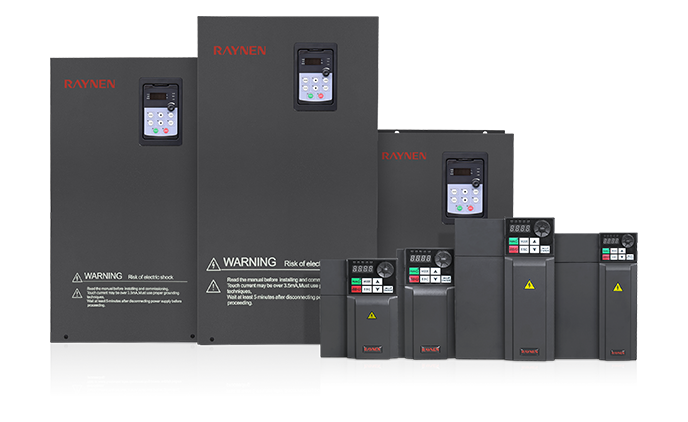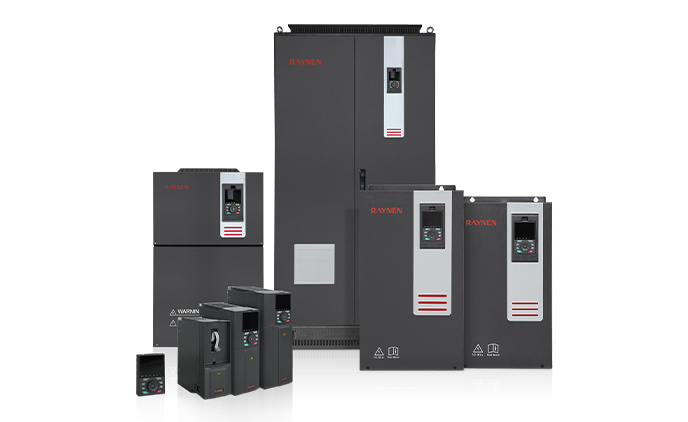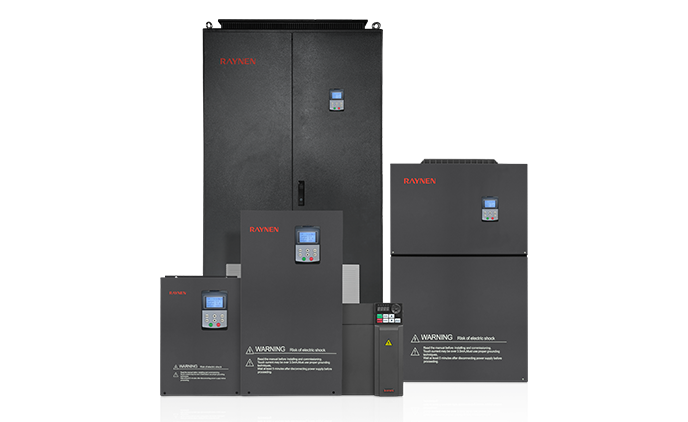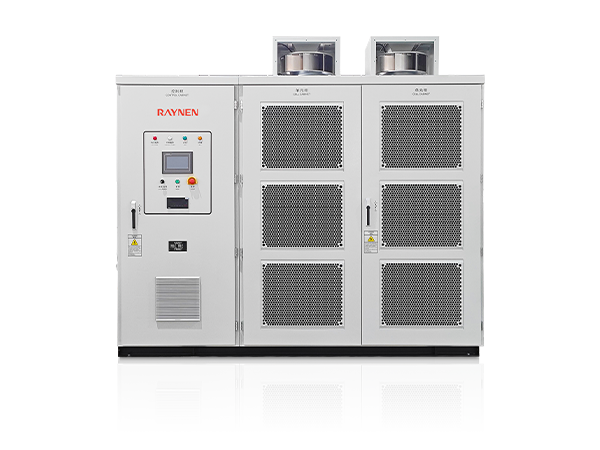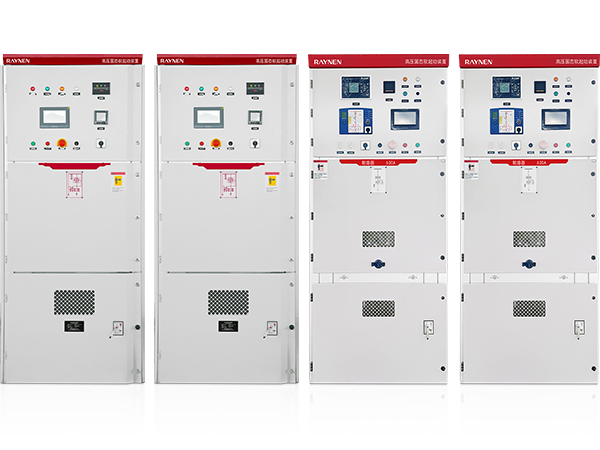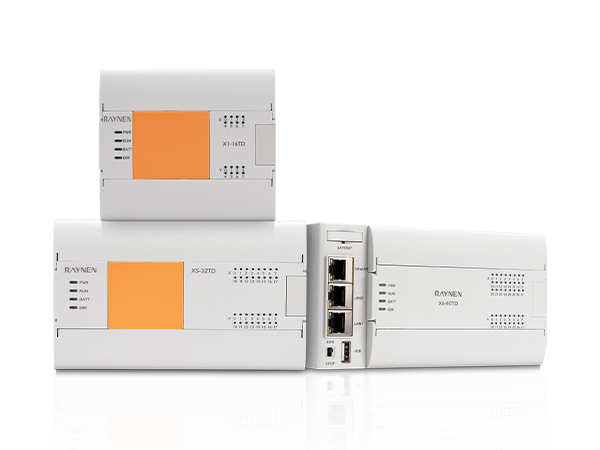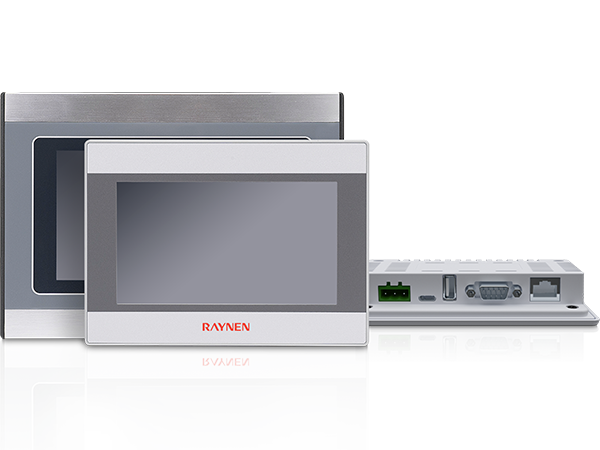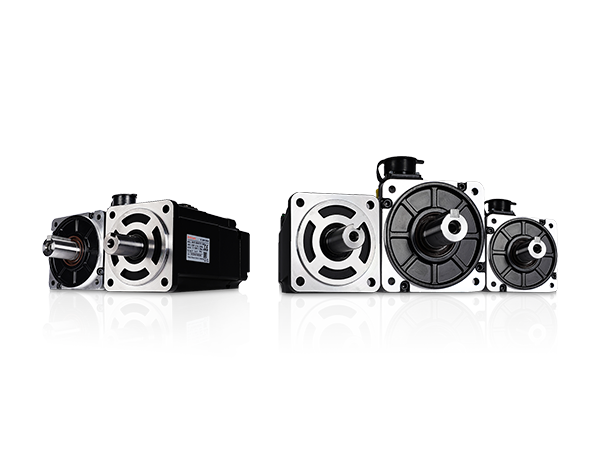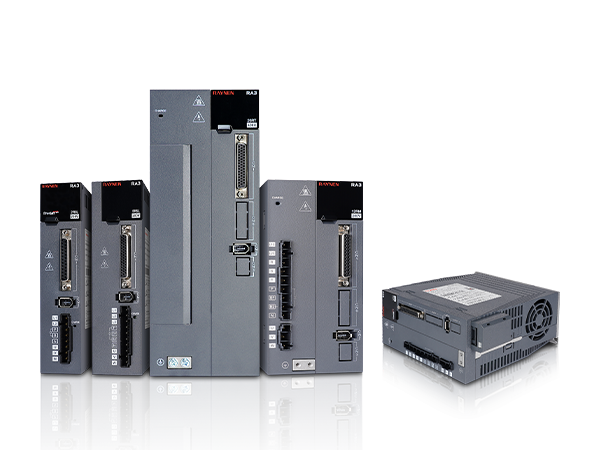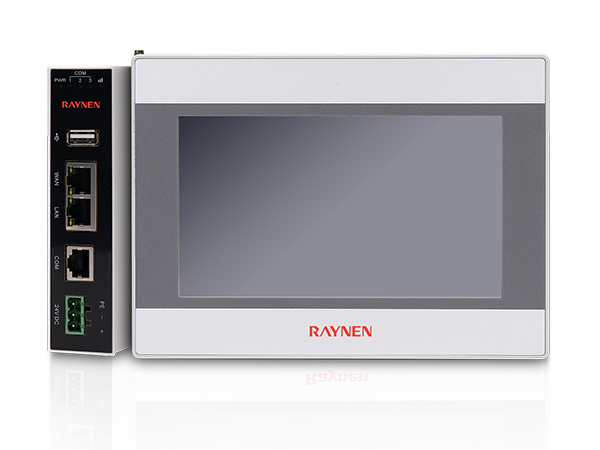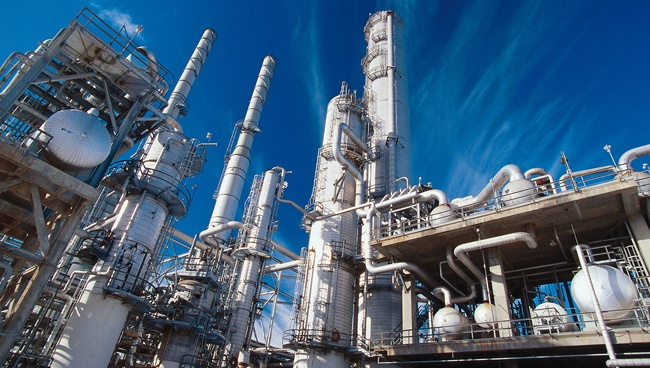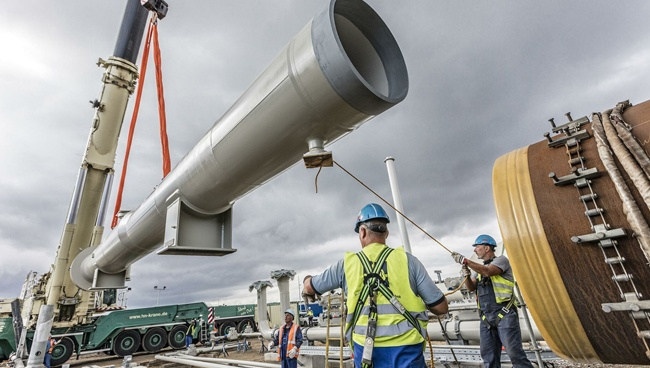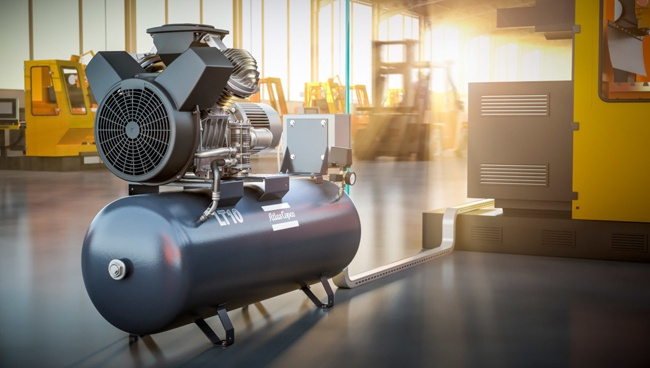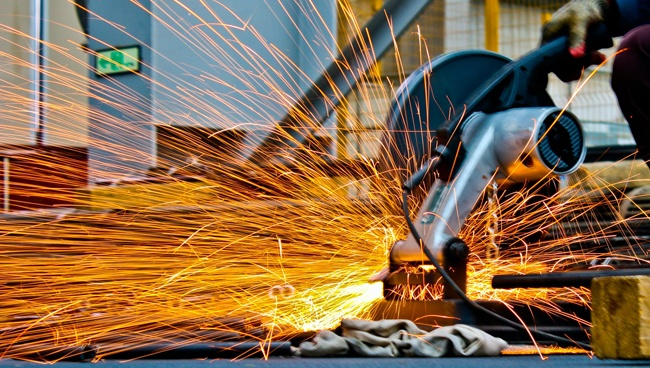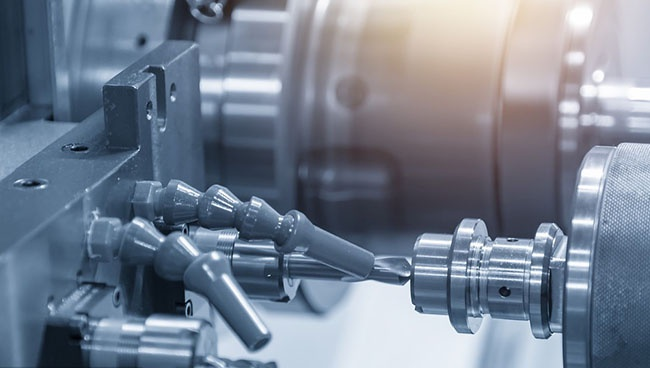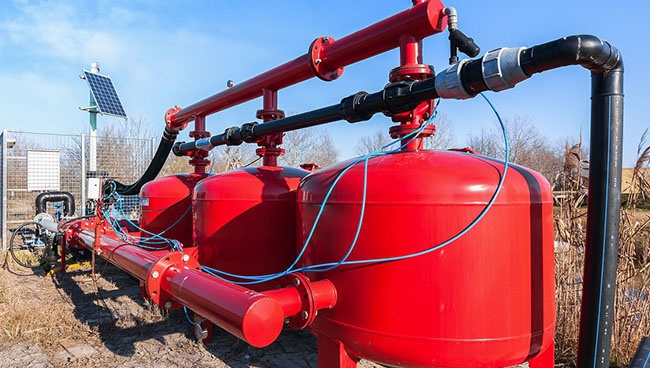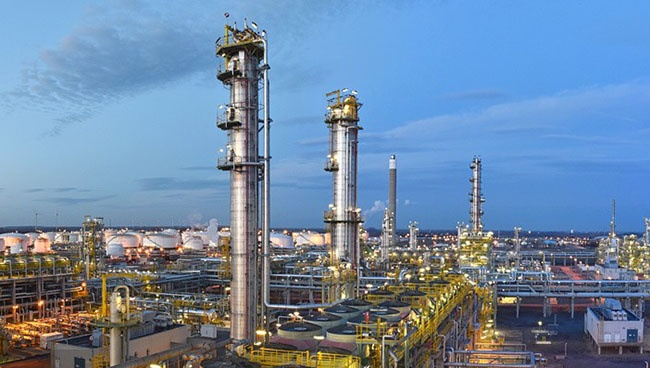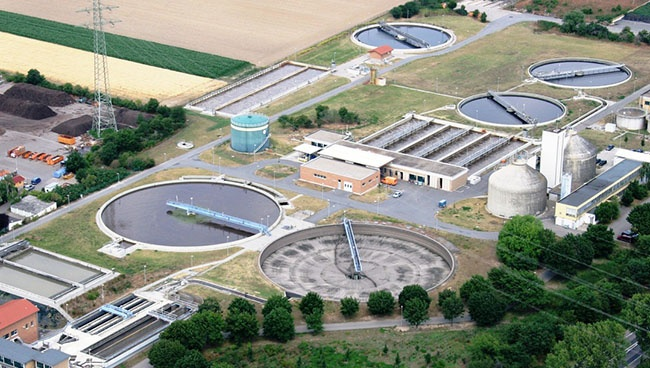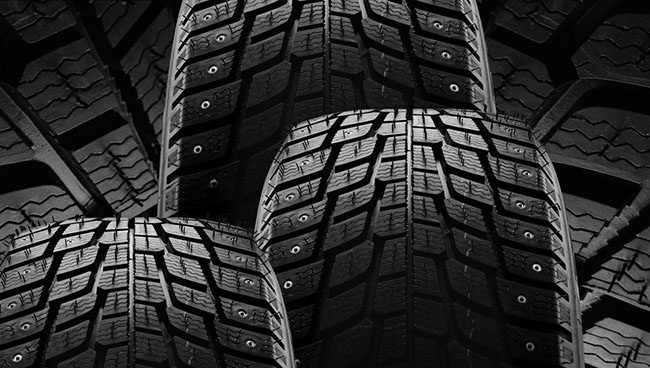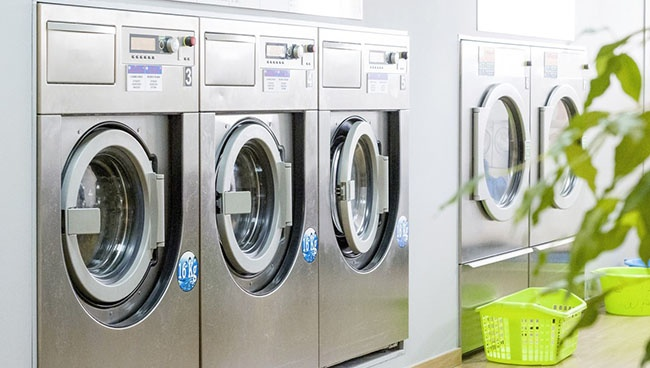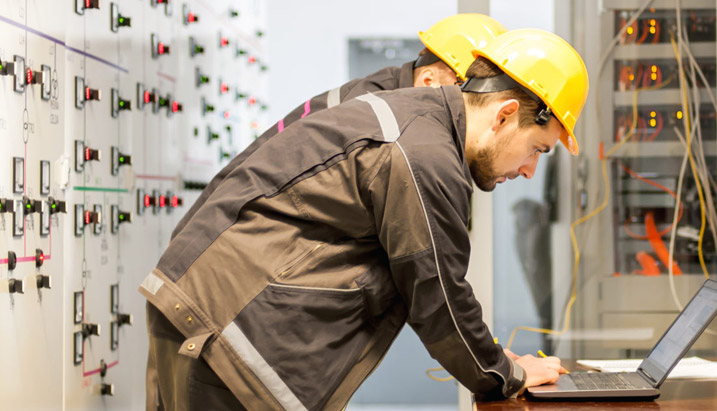1.Introduction to AC Drives (Variable Frequency Drives) In the realm of modern industrial control an......
READ MOREUnderstanding Soft Starters: A Comprehensive Guide
Introduction to Soft Starters
Electric motors are the workhorses of modern industry, driving everything from pumps and fans to conveyor belts and compressors. However, the process of starting these powerful machines can be fraught with challenges, both mechanical and electrical. This is where a "soft starter" comes into play, offering a sophisticated solution to mitigate these issues and ensure the smooth, efficient, and extended operation of motor-driven systems.
1.1 What is a Soft Starter?
Definition and Basic Function
At its core, a soft starter is an electronic device designed to control the acceleration and deceleration of an AC electric motor. Unlike traditional methods of direct on-line (DOL) starting, which apply full voltage to the motor instantaneously, a soft starter gradually increases the voltage supplied to the motor during startup. This controlled ramp-up of voltage, often in conjunction with current limiting, allows the motor to accelerate smoothly, thereby reducing the mechanical and electrical stresses that typically accompany a sudden start.
Its basic function is to provide a "soft" or gentle start, hence the name, by regulating the torque and current applied to the motor. This contrasts sharply with the abrupt jolt of a DOL start, which can be likened to a car suddenly flooring the accelerator from a standstill.
Role in Motor Control Systems
In the broader context of motor control systems, a soft starter acts as an intelligent intermediary between the power supply and the electric motor. It is an essential component for applications where smooth acceleration and deceleration are critical, where high inrush currents are problematic, or where mechanical shock needs to be minimized. While not offering the full speed control capabilities of a Variable Frequency Drive (VFD), a soft starter provides a cost-effective and efficient solution for optimizing motor startup and shutdown, thereby enhancing the overall performance, reliability, and lifespan of the motor and the connected machinery.
1.2 Why Use a Soft Starter?
The advantages of employing a soft starter extend across various facets of motor operation and system integrity. The decision to incorporate a soft starter is driven by the desire to overcome the inherent drawbacks of traditional starting methods.
Reducing Mechanical Stress
When an electric motor starts abruptly, it generates significant mechanical shock throughout the entire system. This sudden jolt, often referred to as the "water hammer effect" in pumping applications (though it applies to mechanical systems generally), puts immense strain on the motor itself, the driven equipment (e.g., gears, belts, couplings, pump impellers), and even the supporting structures. This mechanical stress can lead to premature wear and tear, increased maintenance requirements, and ultimately, costly downtime due to component failure. A soft starter, by gradually increasing torque, eliminates this sudden shock, allowing the mechanical components to accelerate smoothly and reducing the forces they experience.
Minimizing Electrical Disturbances
A direct on-line start draws a very high initial current from the power supply, known as "inrush current," which can be 6 to 8 times (or even more) the motor's full-load current. This sudden surge in current can cause significant voltage dips in the electrical grid, affecting other connected equipment, leading to flickering lights, and potentially tripping circuit breakers. For utility providers, these large inrush currents can also impact grid stability and power quality. Soft starters mitigate this by limiting the starting current to a user-defined level, significantly reducing the electrical disturbances and ensuring a more stable power supply for all connected loads.
Extending Motor Lifespan
The cumulative effect of reduced mechanical stress and minimized electrical disturbances directly translates into an extended operational lifespan for the electric motor and its associated machinery. Less mechanical shock means less wear on bearings, windings, and other critical components. Lower thermal stress on motor windings due to controlled current also contributes to a longer life. By preserving the integrity of these components, soft starters help to defer costly repairs and replacements, contributing to a lower total cost of ownership over the equipment's lifetime.
2. Working Principle of Soft Starters
Understanding how a soft starter operates is key to appreciating its benefits. Unlike simple on/off switches, soft starters employ sophisticated electronic control to achieve their gentle starting and stopping capabilities.
2.1 How Soft Starters Work
The core of a soft starter's operation lies in its ability to manipulate the voltage supplied to the motor, and consequently, the current and torque. This is primarily achieved through two fundamental mechanisms: voltage ramping and current limiting.
Voltage Ramping
The most distinctive feature of a soft starter is its ability to gradually increase the voltage applied to the motor from a low initial value up to the full line voltage. Instead of applying the full 100% voltage instantaneously, the soft starter starts with a reduced voltage and progressively increases it over a pre-set period, known as the "ramp time."
Imagine a dimmer switch for a light bulb: instead of immediately turning the light to full brightness, you slowly increase the light intensity. A soft starter does something similar for a motor. By gradually increasing the voltage, the motor accelerates smoothly, developing torque proportional to the square of the applied voltage. This controlled acceleration prevents the sudden surge of current and mechanical shock associated with a direct on-line start. The rate of voltage increase can often be adjusted by the user to suit specific application requirements.
Current Limiting
While voltage ramping is the primary mechanism, most modern soft starters also incorporate current limiting as a crucial aspect of their operation. Even with voltage ramping, the initial current drawn by a motor can still be substantial. Current limiting allows the user to set a maximum permissible starting current. During the startup sequence, the soft starter continuously monitors the motor current. If the current approaches or exceeds the pre-set limit, the soft starter will momentarily adjust the applied voltage to prevent the current from exceeding this threshold. This ensures that the inrush current is kept within acceptable limits, protecting both the motor and the electrical supply system from harmful surges. This dual action of voltage ramping and current limiting provides comprehensive control over the motor's acceleration.
2.2 Components of a Soft Starter
A typical soft starter unit is comprised of several key components that work in concert to achieve its control functions.
Thyristors/SCRs
The heart of a soft starter's power section consists of back-to-back connected Thyristors (Silicon Controlled Rectifiers or SCRs). These are solid-state semiconductor devices that act like high-speed electronic switches. Unlike traditional mechanical contactors, which simply open or close a circuit, thyristors can be precisely controlled to conduct current for a specific portion of each AC voltage cycle.
In a soft starter, a pair of thyristors is typically connected in inverse parallel for each phase of the AC power supply. By varying the "firing angle" (the point in the AC waveform where the thyristor is switched on), the soft starter can control the average voltage supplied to the motor. A larger firing angle means the thyristor conducts for a shorter period, resulting in lower average voltage. As the motor accelerates, the firing angle is progressively reduced, allowing more of the AC waveform to pass through and thus increasing the voltage to the motor. This precise control over the AC waveform is what enables the voltage ramping and current limiting functions.
Control Circuitry
The control circuitry is the "brain" of the soft starter. This electronic section, typically based on microprocessors or digital signal processors (DSPs), performs several vital functions:
- Monitoring: It continuously monitors critical motor parameters such as voltage, current, temperature, and sometimes even power factor.
- Regulation: Based on the user-defined settings (e.g., ramp time, current limit, start voltage), it calculates the appropriate firing angle for the thyristors.
- Protection: It incorporates various protection algorithms to safeguard the motor and the soft starter itself from conditions like overload, overcurrent, undervoltage, phase loss, and overtemperature.
- Communication: Many modern soft starters include communication ports (e.g., Modbus, Profibus) to integrate with industrial control systems (PLCs, DCSs) for remote monitoring, control, and diagnostics.
- User Interface: It provides a user interface (e.g., keypad, display) for setting parameters and viewing operational status.
Bypass Contactor
Once the motor has reached its full operating speed and the soft starter has successfully ramped up the voltage to the full line voltage, a bypass contactor often comes into play. This is a conventional electro-mechanical contactor that is connected in parallel with the thyristors. Once the startup sequence is complete, the bypass contactor closes, effectively "bypassing" the thyristors.
The primary reasons for using a bypass contactor are:
- Energy Efficiency: When running at full speed, the bypass contactor eliminates the small power losses that would otherwise occur in the thyristors, making the system more energy-efficient during continuous operation.
- Heat Reduction: By taking the thyristors out of the circuit once the motor is running, it significantly reduces the heat generated within the soft starter unit, prolonging its lifespan and potentially allowing for a smaller physical size or less robust cooling system.
- Reliability: It provides a redundant path for power once the motor is running, increasing the overall system reliability.
Not all soft starters include a bypass contactor, especially smaller, simpler models, but it is a common and beneficial feature in higher-power applications.
3. Advantages of Using Soft Starters
The adoption of soft starters in motor control applications is driven by a compelling array of benefits that address both the mechanical and electrical challenges associated with motor operation. These advantages translate directly into increased operational efficiency, reduced maintenance costs, and an extended lifespan for industrial equipment.
3.1 Reduced Mechanical Stress
One of the most significant benefits of a soft starter is its ability to virtually eliminate the mechanical shock that occurs during a direct on-line (DOL) start. When a motor is subjected to full voltage instantaneously, it attempts to reach its full speed almost immediately, creating a sudden surge of torque. This abrupt acceleration, and the accompanying forces, can be highly detrimental to the mechanical integrity of the entire system.
Explanation of Water Hammer Effect and Mitigation
Consider pumping applications: A sudden start of a pump can create a phenomenon known as the "water hammer effect." This is where the rapid acceleration of the fluid column in the pipes generates pressure waves that can lead to damaging shocks and vibrations throughout the piping system, valves, and even the pump itself. This not only causes noise but can lead to pipe rupture, joint failure, and premature wear on pump components.
In conveyor belt systems, a sudden start can cause jerking, material spillage, and excessive tension on the belts and rollers, leading to premature wear and potential breakage. Similarly, in fan applications, abrupt starting can induce vibrations and stress on fan blades and bearings.
A soft starter mitigates these issues by gradually increasing the torque and speed of the motor. By providing a smooth, controlled acceleration ramp, it allows the mechanical system to gently come up to speed. This eliminates the sudden shock loading, significantly reducing stress on gearboxes, couplings, bearings, belts, and other transmission components. The result is a substantial decrease in wear and tear, leading to fewer breakdowns, lower maintenance costs, and a longer operational life for the entire mechanical system.
3.2 Lower Inrush Current
As previously discussed, a DOL start causes the motor to draw a very high "inrush current" – typically 6 to 8 times its full-load current. This transient current surge can have several negative consequences.
Impact on Power Grid Stability
On the electrical side, a high inrush current can lead to:
- Voltage Dips: The sudden demand for high current can cause the voltage across the electrical network to momentarily drop. This "brownout" effect can negatively impact other sensitive equipment connected to the same power supply, potentially causing malfunctions, reboots, or even damage.
- Grid Instability: For utility companies, numerous large motors starting simultaneously with high inrush currents can destabilize the local power grid, leading to power quality issues for other consumers.
- Oversizing of Electrical Infrastructure: To cope with high inrush currents, electrical components like transformers, cables, and circuit breakers often need to be oversized, leading to higher installation costs.
Soft starters effectively limit this inrush current by controlling the applied voltage. By keeping the starting current below a pre-set maximum (e.g., 3-4 times full-load current), they prevent severe voltage dips, reduce stress on electrical components, and minimize disturbances to the power grid. This translates to a more stable electrical environment and potentially allows for smaller, more cost-effective electrical infrastructure.
3.3 Controlled Acceleration and Deceleration
Beyond just starting, many applications also benefit from a controlled shutdown. Soft starters provide both smooth acceleration and smooth deceleration capabilities.
Smooth Start and Stop
- Smooth Start: As elaborated, the gradual voltage ramp-up ensures that the motor and its connected load accelerate gently, preventing mechanical shock and high inrush currents. This is critical for processes where sudden movements could cause damage to products (e.g., delicate materials on a conveyor), or where fluid dynamics are sensitive (e.g., preventing water hammer).
- Smooth Stop (Soft Stop): Many soft starters also offer a "soft stop" feature. Instead of simply disconnecting power and allowing the motor to coast to a stop (which can be abrupt for high inertia loads), a soft stop gradually reduces the voltage to the motor over a defined period. This controlled ramp-down of voltage and torque brings the motor and its load to a gentle halt. For applications like pumps, this completely eliminates water hammer on shutdown. For conveyors, it prevents material shifting or product damage that could occur from a sudden stop. This controlled deceleration is particularly valuable in applications requiring precise control over the stopping process.
3.4 Extended Motor Life
The cumulative effect of reducing both mechanical stress and electrical strain significantly extends the operational lifespan of the electric motor itself.
Reduced Wear and Tear
- Bearings: Less sudden shock and vibration mean less stress on motor bearings, which are often a primary point of failure.
- Windings: Lower inrush currents reduce the thermal stress on motor windings. Repeated high current surges can degrade winding insulation over time, leading to premature winding failure.
- Mechanical Components: By protecting associated mechanical components (couplings, gearboxes, pumps, fans) from shock, the overall system operates more harmoniously, leading to less transmitted vibration back to the motor.
By operating within more controlled parameters during startup and shutdown, the motor experiences significantly less wear and tear, postponing the need for costly repairs, rewinds, or replacements, thereby contributing to a lower overall total cost of ownership.
3.5 Energy Saving
While not primarily an energy-saving device in the same way a VFD is for variable speed applications, soft starters can contribute to energy savings in specific scenarios.
Optimization of Motor Performance
- Reduced Peak Demand Charges: By limiting the high inrush current during startup, soft starters help to reduce the peak demand seen by the utility. Many commercial and industrial electricity tariffs include charges based on peak demand. Lowering this peak can lead to direct savings on electricity bills.
- Improved Power Factor During Start: While not a significant ongoing saving, managing the current during startup can sometimes have a minor positive impact on the instantaneous power factor compared to an uncontrolled DOL start, though this is less impactful than a VFD's continuous power factor correction.
- Reduced Mechanical Losses: By preventing excessive mechanical stress and vibration, soft starters indirectly contribute to energy efficiency by ensuring that the motor and driven equipment operate within their optimal mechanical parameters, minimizing wasted energy due to friction, shock, and system inefficiencies caused by rapid acceleration. While not a direct energy saver during continuous operation (as a bypass contactor typically takes the thyristors out of circuit), the overall system efficiency and reduced need for maintenance contribute to a more optimized and energy-conscious operation.
4. Applications of Soft Starters
The versatile benefits of soft starters – particularly their ability to mitigate mechanical stress and electrical disturbances – make them an ideal choice for a wide array of applications across various industries. They are especially valuable where smooth operation, equipment longevity, and power grid stability are paramount.
4.1 Industrial Applications
Industries heavily rely on electric motors to drive essential processes. Soft starters find widespread use in these environments for a variety of motor-driven equipment:
- Pumps: This is one of the most common applications. Soft starters eliminate the "water hammer effect" (sudden pressure surges in pipes) during both starting and stopping, protecting pipes, valves, and the pump itself from damage. They are used in water supply systems, irrigation, wastewater treatment, and chemical processing.
- Fans: Large industrial fans, often found in ventilation systems, cooling towers, and exhaust systems, benefit from soft starters by reducing mechanical stress on fan blades, bearings, and ductwork during startup. This prevents damaging vibrations and extends the life of the fan unit.
- Compressors: Reciprocating and centrifugal compressors, used in air conditioning, refrigeration, and industrial gas systems, experience high mechanical stress during direct starts. Soft starters provide a gentle ramp-up, protecting the compressor's internal components, reducing wear on belts and pulleys, and minimizing noise.
- Conveyor Belts: In manufacturing, mining, and logistics, conveyor belts move materials. A sudden start can cause jerking, leading to material spillage, excessive tension on the belt, and potential damage to gearboxes and rollers. Soft starters ensure a smooth, controlled acceleration, preserving the belt's integrity and preventing product loss or damage.
- Mixers and Agitators: Used in food processing, chemical, and pharmaceutical industries, mixers often handle viscous materials. A soft start prevents sudden splashes, undue stress on shafts and blades, and motor overload that can occur if the material is thick.
- Crushers and Grinders: In mining and aggregate industries, these machines handle heavy, abrasive materials. Soft starters manage the high inertia and varying load conditions during startup, protecting the motor and the crushing mechanism from sudden shock.
4.2 Commercial Applications
Soft starters are not limited to heavy industry; they also play a crucial role in ensuring efficient and reliable operation in commercial settings:
- HVAC Systems (Heating, Ventilation, and Air Conditioning): Large chillers, air handling units (AHUs), and ventilation fans in commercial buildings (offices, hospitals, shopping centers) frequently utilize soft starters. They prevent high inrush currents that could cause voltage dips and flicker in the building's electrical system, protecting sensitive electronics. They also reduce noise and vibration during startup and shutdown, contributing to a more comfortable environment.
- Escalators and Elevators: While often employing more complex control systems like VFDs for precise speed control, some simpler escalator and elevator systems, particularly older ones or those with less stringent speed requirements, may use soft starters to ensure a smooth, jerk-free start and stop for passenger comfort and safety, as well as to reduce wear on the mechanical braking system.
- Refrigeration Units: Large commercial refrigeration compressors benefit from soft starting to reduce stress on the compressor unit and minimize electrical disturbances in facilities like supermarkets or cold storage warehouses.
4.3 Specific Examples
To further illustrate their impact, here are a few specific instances where soft starters are indispensable:
- Water Treatment Plants: These facilities rely heavily on pumps for raw water intake, filtration, distribution, and wastewater processing. Soft starters are universally applied to these pumps to prevent water hammer in extensive piping networks, protect pump impellers, and ensure continuous, reliable water supply without grid disturbances. Their use is critical for maintaining operational uptime and infrastructure integrity.
- Mining Industry: In mining, massive conveyors transport ore, and powerful pumps dewater mines. Crushers and mills process raw materials. All these applications involve heavy loads and harsh operating conditions. Soft starters are vital for managing the high starting torques and inertia associated with this machinery, extending the life of expensive equipment, and maintaining power quality on often isolated or sensitive mine grids. They prevent damage to belts, gearboxes, and motors, which are costly and time-consuming to replace in remote locations.
These examples highlight how soft starters are not just components but critical enablers of reliable, efficient, and long-lasting operation in diverse motor-driven systems.
5. Soft Starter vs. Variable Frequency Drive (VFD)
While both soft starters and Variable Frequency Drives (VFDs) are used to control electric motors, they serve different primary purposes and offer distinct capabilities. Understanding their differences is crucial for selecting the appropriate technology for a given application.
5.1 Key Differences
The fundamental difference lies in their functionality and the level of motor control they provide.
Functionality and Control
- Soft Starter: A soft starter primarily controls the starting and stopping of an AC motor. It achieves this by gradually increasing the voltage applied to the motor during startup (and decreasing it during shutdown), limiting inrush current and reducing mechanical stress. Once the motor reaches its full speed, the soft starter often bypasses its internal control circuitry (e.g., with a bypass contactor) and the motor runs directly connected to the line voltage. A soft starter does not continuously control the motor's speed.
- Variable Frequency Drive (VFD): A VFD, on the other hand, provides continuous control over the motor's speed and torque. It does this by varying both the voltage and the frequency of the power supplied to the motor. By altering the frequency, a VFD can precisely adjust the motor's speed from zero to its maximum rated speed (and sometimes even beyond). VFDs also offer advanced control features like torque limiting, braking, and precise positioning.
In essence, a soft starter is a starting device, while a VFD is a speed control device. A soft starter's primary function is to provide a smooth start and stop, whereas a VFD's primary function is to continuously adjust the motor's operating speed to match the demands of the application.
5.2 When to Use a Soft Starter
Soft starters are ideal for applications where:
Suitable Applications
- Smooth Starting and Stopping are Essential: Applications where mechanical stress reduction is critical (pumps, conveyors, fans).
- High Inrush Current Needs to be Mitigated: Situations where limiting starting current is necessary to avoid voltage dips or grid disturbances.
- Constant Speed Operation is Sufficient: Processes that operate at a fixed speed once started (most pumps, fans, compressors) and do not require continuous speed adjustment.
- Cost-Effectiveness is a Primary Concern: Soft starters are generally less expensive than VFDs for comparable motor sizes.
- Simplicity is Desired: Soft starters are typically easier to install and configure than VFDs.
Examples include:
- Pumps: Where water hammer needs to be avoided.
- Fans: Where smooth acceleration reduces stress on blades and bearings.
- Conveyors: Where jerk-free starts prevent material spillage.
- Compressors: Where reduced starting torque protects the compressor mechanism.
- Mixers: Where gradual acceleration prevents splashing or overload.
5.3 When to Use a VFD
VFDs are the preferred choice for applications demanding:
Suitable Applications
- Variable Speed Control: Processes that require the motor speed to be continuously adjusted to match changing load conditions or process requirements.
- Energy Savings Through Speed Reduction: Applications where reducing speed can significantly lower energy consumption (e.g., centrifugal pumps or fans where flow rate can be reduced).
- Precise Torque Control: Systems where maintaining a specific torque level is critical (e.g., winding machines, extruders).
- Advanced Control Features: Applications requiring features like dynamic braking, precise positioning, or integration with sophisticated automation systems.
Examples include:
- Centrifugal Pumps and Fans: Where flow or pressure needs to be varied, resulting in significant energy savings at reduced speeds.
- Extruders: Where precise speed and torque control are essential for material consistency.
- Winding Machines: Where controlled tension and speed are critical.
- Dynamometers: For testing motor performance at various speeds and loads.
- Elevators and Escalators: For smooth acceleration, deceleration, and leveling, and often for energy savings by reducing speed during periods of low traffic.
In summary, a soft starter is a cost-effective solution for smooth starting and stopping of motors in fixed-speed applications, while a VFD provides continuous speed and torque control for variable-speed applications, often with added benefits like energy savings and advanced automation capabilities. The choice depends on the specific needs of the application.
6. Selecting the Right Soft Starter
Choosing the appropriate soft starter for a given application is critical to ensuring optimal performance, protecting the motor, and maximizing the benefits. A thoughtful selection process involves considering various technical parameters and application-specific requirements.
6.1 Factors to Consider
Several key factors must be evaluated when specifying a soft starter:
Motor Voltage and Current
The most fundamental consideration is to match the soft starter's voltage rating to the motor's operating voltage (e.g., 230V, 400V, 690V). Equally important is the motor's full-load current (FLC). The soft starter must be rated to handle the continuous operating current of the motor, as well as the anticipated starting current. Over-sizing or under-sizing can lead to inefficient operation or premature failure. It's often recommended to select a soft starter with a current rating slightly above the motor's FLC to provide a buffer for variations and ensure reliable operation.
Application Requirements
Understanding the specific needs of the application is crucial. This involves assessing:
- Load Type: Is it a light-duty load (e.g., small fan) or a heavy-duty load (e.g., high-inertia crusher)? Different load types require different starting characteristics and ramp times. Heavy-duty applications may require a soft starter with a higher overload capacity during startup.
- Number of Starts per Hour: Frequent starts can generate significant heat within the soft starter's power semiconductors (thyristors). Applications with a high starting frequency may require a soft starter designed for more robust thermal management or a higher duty cycle rating.
- Startup Time (Ramp Time): How quickly does the motor need to reach full speed? This influences the soft starter's settings and its ability to manage acceleration without excessive current or mechanical stress.
- Deceleration Needs: Is a soft stop required to prevent water hammer or product damage? If so, the soft starter must have a controlled deceleration feature.
Load Characteristics
The characteristics of the load directly impact the required starting torque and duration.
- Inertia: High inertia loads (e.g., large fans, flywheels, centrifuges) take longer to accelerate and require sustained torque during startup, demanding more from the soft starter.
- Starting Torque Requirement: Some loads require a minimum starting torque to overcome static friction (e.g., conveyor belts with material on them), while others (like pumps) may have a more gradual torque requirement. The soft starter's ability to provide a suitable initial torque is important.
- Friction: The amount of friction in the mechanical system will affect the power required to start and accelerate the load.
6.2 Soft Starter Sizing
Correct sizing is paramount. A common mistake is to size a soft starter solely based on the motor's horsepower (HP) or kilowatt (kW) rating, which can be misleading.
Calculating the Appropriate Size
The most reliable method for sizing is to use the motor's full-load current (FLC) and consider the application's duty cycle. Manufacturers provide sizing tables or software tools that relate the motor FLC to their soft starter models, often with different sizing recommendations for "normal duty" (e.g., pumps, fans with infrequent starts) and "heavy duty" (e.g., crushers, high inertia loads with frequent starts).
- Motor FLC (Amperes): This is the primary parameter. The soft starter's continuous current rating should be equal to or greater than the motor's FLC.
- Starting Current Multiplier: Soft starters typically allow setting a starting current limit (e.g., 300% or 400% of FLC). Ensure the chosen soft starter can provide the necessary current for the load to accelerate within an acceptable time, without exceeding its own thermal limits.
- Duty Cycle: If the motor starts frequently, the soft starter must be able to dissipate the heat generated by the thyristors during each start. Refer to the soft starter's datasheet for the maximum number of starts per hour at a given load and ambient temperature.
It's always advisable to consult the soft starter manufacturer's specific sizing guidelines, which often factor in anticipated ambient temperatures, ventilation, and specific load types.
6.3 Available Features
Modern soft starters come with a range of features that enhance their functionality, protection capabilities, and integration into control systems.
Overload Protection
A crucial feature, overload protection, safeguards the motor from excessive current draw that could lead to overheating and damage. Soft starters typically include integrated electronic overload relays that monitor the motor current and trip the soft starter if an overload condition persists. This often includes thermal memory to account for the motor's heating and cooling characteristics.
Communication Protocols (e.g., Modbus)
Many advanced soft starters offer built-in communication capabilities, such as Modbus RTU, Profibus, Ethernet/IP, or DeviceNet. These protocols allow the soft starter to:
- Integrate with PLCs (Programmable Logic Controllers) or DCS (Distributed Control Systems): For centralized control, monitoring, and data acquisition.
- Remote Monitoring: Operators can monitor motor status, current, voltage, temperature, fault codes, and other parameters from a control room.
- Remote Control: Start/stop commands, parameter adjustments, and fault resets can be initiated remotely.
- Diagnostic Information: Access to detailed fault logs and operational data aids in troubleshooting and predictive maintenance.
Other valuable features might include:
- Adjustable Start and Stop Ramps: Fine-tuning acceleration and deceleration profiles.
- Kick Start: A brief application of higher voltage to overcome initial static friction for very heavy loads.
- Motor Protection Functions: Beyond overload, these can include phase loss, phase imbalance, over/under voltage, stalled rotor, and earth fault protection.
- Built-in Bypass Contactor: As discussed earlier, to reduce heat and improve efficiency during full-speed operation.
- Energy Saving Mode: Some soft starters offer an energy-saving mode during light-load operation by optimizing voltage, though this is less pronounced than with a VFD.
- Human-Machine Interface (HMI): Integrated keypads and displays for local configuration and status indication.
Careful consideration of these factors and available features will lead to the selection of a soft starter that not only starts and stops the motor smoothly but also contributes to the overall reliability, efficiency, and safety of the driven system.
7. Installation and Commissioning
Proper installation and meticulous commissioning are paramount to ensuring the safe, reliable, and optimal performance of a soft starter. Incorrect wiring or improper parameter settings can lead to motor damage, equipment malfunction, or even safety hazards.
7.1 Installation Guidelines
Adhering to manufacturer guidelines and relevant electrical codes (e.g., NEC, IEC) is essential during installation.
Wiring and Connections
-
Power Circuit Connections:
- Incoming Power: The main three-phase power supply (L1, L2, L3) from the circuit breaker or disconnect switch connects to the soft starter's input terminals. Ensure the voltage and phase sequence match the soft starter's rating and the motor's requirements.
- Motor Connections: The soft starter's output terminals (T1, T2, T3 or U, V, W) connect directly to the motor's terminals. It's crucial to verify correct phase rotation to ensure the motor spins in the intended direction. If a bypass contactor is integrated or external, its connections will also be made in parallel with the soft starter's power terminals.
- Grounding: A robust earth ground connection is mandatory for safety and to ensure proper operation of protection circuits. The soft starter chassis and the motor frame must be properly grounded.
-
Control Circuit Connections:
- Control Power: Most soft starters require a separate control voltage supply (e.g., 24V DC, 110V AC, 230V AC) to power their internal electronics. This circuit should be fused or protected separately.
- Start/Stop Inputs: Connect external control signals (e.g., from a push-button, PLC output, or relay contact) to the soft starter's digital inputs to initiate start and stop commands.
- Auxiliary Contacts/Relays: Soft starters typically provide auxiliary relay outputs for "Run," "Fault," or "Bypass Engaged" status. These can be wired to control panels, PLCs, or indicator lights.
- Analog Inputs/Outputs: For advanced control or monitoring, analog inputs might be used for external speed references (though soft starters don't control speed, some might use it for specific functions) or analog outputs for current/voltage feedback.
- Communication Links: If using communication protocols (e.g., Modbus RTU), connect the twisted-pair communication cables according to the protocol's specifications (e.g., RS-485 A/B lines).
-
Environmental Considerations:
- Ventilation: Ensure adequate clearance around the soft starter for proper airflow and heat dissipation. Soft starters generate heat during operation, especially during starting. Overheating can lead to reduced lifespan or nuisance trips.
- Temperature: Install within the specified ambient temperature range.
- Dust and Moisture: Protect the soft starter from excessive dust, moisture, and corrosive environments. Consider using appropriate enclosures (e.g., NEMA 4X, IP65) if necessary.
- Vibration: Mount on a stable surface to minimize vibration.
7.2 Commissioning Process
Once physically installed, the soft starter needs to be commissioned to match the specific motor and application. This involves configuring its internal parameters.
Setting Parameters
- Motor Data Input:
- Rated Voltage: Match the supply voltage.
- Rated Current (FLC): Input the motor's full-load current from its nameplate. This is crucial for accurate overload protection.
- Rated Power (kW/HP): Input the motor's rated power.
- Power Factor: If available, input the motor's power factor.
- Application-Specific Settings:
- Start Ramp Time: This is a critical setting, typically measured in seconds. It defines how long it takes for the motor to accelerate from initial voltage to full voltage. This value is adjusted based on the load's inertia and the desired smoothness of acceleration. Too short a time can cause excessive current; too long can lead to motor heating.
- Stop Ramp Time (if applicable): If a soft stop is desired, set the duration over which the voltage is gradually reduced to bring the motor to a gentle halt.
- Initial Start Voltage/Torque: Defines the starting voltage level. A higher initial voltage provides more starting torque, useful for loads requiring more breakaway force. Too low, and the motor may not start or take too long.
- Current Limit: Set the maximum permissible starting current (e.g., 300% or 400% of FLC). This protects the motor and the electrical supply.
- Overload Protection Class: Select the appropriate overload class (e.g., Class 10, 20, 30) based on the motor's thermal characteristics and the load's starting duration. Class 10 is for standard starting, Class 20 for heavier duty, etc.
- Kick Start Duration/Level: If a kick start is used, set its duration and voltage level.
- Bypass Delay: If an internal or external bypass contactor is used, set the delay before it closes after the motor reaches full speed.
Testing and Verification
After setting parameters, thorough testing is essential:
- Pre-Power-Up Checks:
- Verify all wiring connections are secure and correct.
- Check for proper grounding.
- Measure insulation resistance for motor and cables.
- Ensure all safety interlocks are correctly wired.
- No-Load Test (if feasible):
- If possible, perform a start and stop sequence with the motor disconnected from its mechanical load. Observe the motor's acceleration.
- Monitor current and voltage during startup.
- Loaded Test:
- Connect the motor to its mechanical load.
- Initiate a start cycle.
- Monitor Motor Current: Observe the starting current profile to ensure it stays within limits and doesn't cause excessive voltage dips.
- Monitor Motor Temperature: Check for unusual heating during the start sequence, especially with longer ramp times or heavy loads.
- Observe Mechanical Smoothness: Verify that the mechanical system (pump, fan, conveyor) accelerates smoothly without jerking, excessive vibration, or water hammer.
- Verify Stop Function: If a soft stop is enabled, ensure the motor decelerates smoothly and stops as expected.
- Check Fault Indicators: Confirm that the soft starter's fault indicators or outputs behave as expected during normal operation and if a fault is intentionally simulated (e.g., emergency stop).
- Adjust Parameters: Based on the test results, fine-tune the ramp times, initial voltage, and current limits to achieve the desired performance, balancing smooth operation with efficient acceleration.
Documentation of all settings and test results is crucial for future maintenance and troubleshooting. Proper commissioning ensures that the soft starter operates effectively, providing the intended benefits of extended motor life and reduced system stress.
8. Maintenance and Troubleshooting
Even with robust design and proper installation, soft starters, like any electrical equipment, require periodic maintenance and attention to potential issues to ensure their longevity and reliable operation.
8.1 Regular Maintenance
A proactive maintenance schedule can significantly extend the lifespan of a soft starter and prevent unexpected downtime.
-
Inspection and Cleaning:
- Visual Inspection (Regular): Routinely check for any signs of physical damage, loose connections, discolored wiring (indicating overheating), or unusual odors. Look for dust buildup, especially on cooling fins and fan grilles.
- Dust Removal (Periodic): Dust and debris can accumulate on circuit boards and heat sinks, impeding airflow and reducing the unit's ability to dissipate heat. This is a common cause of overheating. Use a dry, soft brush or compressed air (ensure it's clean and dry, and use at a safe distance/pressure) to gently clean the internal components. Always ensure the power is disconnected and proper lockout/tagout procedures are followed before opening the enclosure.
- Terminal Tightness: Over time, vibrations or thermal cycling can cause electrical connections to loosen. Periodically check and retighten all power and control terminal screws. Loose connections can lead to increased resistance, heat generation, and potential arcing.
- Cooling Fans (if applicable): Inspect cooling fans for proper operation, unusual noise, or signs of blockage. Ensure they are free from dust and debris, and that they are spinning freely. Replace faulty fans promptly, as they are crucial for thermal management.
- Capacitor Health: For older units, or as part of a more in-depth maintenance, visually inspect capacitors for bulging, leakage, or discoloration, which can indicate impending failure.
-
Environmental Checks:
- Ambient Temperature: Ensure the operating environment's temperature remains within the soft starter's specified limits. High ambient temperatures reduce the unit's current capacity and accelerate component aging.
- Ventilation: Verify that ventilation pathways are unobstructed and that the enclosure's air filters (if present) are clean. Adequate airflow is essential for dissipating heat.
- Humidity and Contaminants: Confirm that the soft starter is protected from excessive humidity, condensation, and corrosive atmospheres, which can degrade insulation and damage electronic components. If operating in a humid environment, consider using space heaters to prevent condensation.
-
Parameter Verification:
- Periodically review the soft starter's parameter settings against the motor's nameplate data and the application requirements. Changes in the driven load or motor replacement might necessitate parameter adjustments.
8.2 Common Issues and Troubleshooting
Understanding common soft starter issues and their typical causes can help in rapid diagnosis and resolution, minimizing downtime. Always prioritize safety and disconnect power before any internal inspection or repair.
Overheating
- Symptoms: Soft starter trips on "overheat fault" (e.g., OHF on some models), or internal temperature alarm. The unit's surface or cooling fins may be excessively hot.
- Causes:
- Frequent Starts: Too many starts in a short period, especially with heavy loads, generate excessive heat in the thyristors that the cooling system cannot dissipate.
- Long Start Time/Heavy Load: If the motor takes too long to accelerate due to a very heavy load or insufficient starting torque settings, the thyristors conduct current for extended periods, leading to overheating.
- Inadequate Ventilation: Blocked cooling fins, dirty filters, failed cooling fans, or insufficient space around the unit.
- Oversized Motor/Undersized Soft Starter: The soft starter may not be adequately sized for the motor or the application's duty cycle.
- Bypass Contactor Failure: If the bypass contactor fails to close after startup, the thyristors remain in the circuit, continuously generating heat.
- Troubleshooting:
- Reduce the number of starts per hour.
- Check and clean cooling fans and ventilation pathways.
- Verify the bypass contactor is engaging properly.
- Re-evaluate soft starter sizing relative to the motor and load.
- Adjust start parameters (e.g., increase initial voltage, shorten ramp time if appropriate) to reduce starting duration.
- Check ambient temperature.
Fault Codes
- Symptoms: The soft starter displays an alphanumeric fault code (e.g., "OLF" for overload, "PHF" for phase fault) on its HMI or signals a fault via its communication interface.
- Causes: Fault codes are specific to the manufacturer and model but generally indicate:
- Overload: Motor draws current above its rated value for too long. Can be caused by mechanical issues (e.g., seized bearings), misadjusted motor overload parameters in the soft starter, or incorrect motor FLC input.
- Phase Loss/Imbalance: One or more phases of the incoming power or outgoing motor connection are missing or severely imbalanced. Can be due to blown fuses, tripped breakers, loose connections, or utility supply issues.
- Underload: Motor current is too low, indicating a broken coupling, pump running dry, or belt snapping.
- Start Timeout: The motor fails to reach full speed within the allotted start ramp time. Often due to an undersized soft starter, too long a ramp time, too low an initial voltage, or a mechanical issue with the load.
- Overvoltage/Undervoltage: Input voltage outside the soft starter's permissible range.
- Internal Fault: A hardware or software issue within the soft starter itself (e.g., thyristor damage, control board failure).
- Troubleshooting:
- Consult the soft starter's manual for a detailed explanation of the specific fault code.
- Follow the recommended troubleshooting steps provided by the manufacturer.
- Perform visual checks for loose wires, tripped breakers, or physical damage.
- Measure voltages and currents at various points in the circuit.
- Verify motor health (winding resistance, insulation).
- Reset parameters to factory defaults and reconfigure if settings are suspected to be incorrect.
- If an internal component failure is suspected (e.g., thyristor damage), contact a qualified service technician or the manufacturer.
Regular maintenance and a systematic approach to troubleshooting, backed by the manufacturer's documentation, are key to maximizing the uptime and operational efficiency of soft starter-controlled motor systems.
9. Top Soft Starter Products
The market for soft starters is robust, with several leading manufacturers offering a range of products tailored to various motor sizes, application complexities, and industry demands. These companies are renowned for their reliability, advanced features, and extensive support. While product lines evolve, here are some of the most recognized and widely used soft starter series:
-
ABB PSE Softstarters: ABB is a global technology leader with a comprehensive portfolio of motor control products. The ABB PSE (Softstarter Economy) series is a popular choice known for its balance of performance and cost-effectiveness. It offers basic soft start and stop functionalities for applications where direct on-line starting causes issues but full speed control isn't necessary. ABB also offers more advanced series like the PSTX (Advanced Softstarters) which provide greater functionality, including intelligent motor control, current limiting, torque control, and integrated communication features, suitable for heavy-duty applications and those requiring more sophisticated protection and monitoring.
-
Siemens SIRIUS 3RW Soft Starters: Siemens is another major player in industrial automation and control. Their SIRIUS 3RW soft starter family is extensive, covering a wide range of power ratings and functionalities. The 3RW30/3RW40 series are common for standard applications, offering gentle starting and stopping. The more advanced 3RW50/3RW52/3RW55 series provide enhanced features like integrated bypass, soft stop, current limiting, motor protection, and communication capabilities for integration into complex automation systems. Siemens soft starters are known for their compact design and seamless integration within the broader SIRIUS control gear family.
-
Schneider Electric Altistart 48: Schneider Electric's Altistart 48 is a highly regarded and widely deployed soft starter designed for heavy-duty applications and pumps. It's recognized for its robust design, excellent motor and machine protection features, and its ability to manage high-inertia loads effectively. The Altistart 48 offers advanced functions like torque control, current limiting, integrated bypass, and a comprehensive set of protection functions. It's often chosen for demanding industrial environments where reliability and performance under challenging conditions are critical. Schneider Electric also offers other Altistart series for different application needs.
-
Eaton S801+ Soft Starters: Eaton is a power management company with a strong presence in industrial controls. The Eaton S801+ soft starter series is engineered for robust performance in demanding applications. It features advanced motor protection, an integrated bypass contactor, and sophisticated control algorithms to ensure smooth acceleration and deceleration for a wide range of motor loads. The S801+ is known for its user-friendly interface and diagnostic capabilities, making it a reliable choice for critical industrial processes.
-
Rockwell Automation Allen-Bradley SMC Soft Starters: Rockwell Automation, through its Allen-Bradley brand, is a leader in industrial automation, particularly in North America. Their SMC (Smart Motor Controller) soft starter lines are well-regarded for their ease of integration into Allen-Bradley control systems (like ControlLogix and CompactLogix PLCs). The SMC-3 (Compact), SMC-Flex (Standard), and SMC-50 (Advanced) series offer varying levels of features, from basic soft starting to advanced motor protection, energy-saving modes, and comprehensive diagnostic capabilities, leveraging Rockwell's Integrated Architecture for seamless connectivity and data exchange.
These manufacturers continually innovate, introducing new models with improved efficiency, smaller footprints, enhanced communication options, and more sophisticated control algorithms. When selecting a product, it's advisable to consult the latest datasheets and compare features against your specific application requirements.
10. Future Trends in Soft Starter Technology
While soft starters have been a cornerstone of motor control for decades, the technology continues to evolve, driven by advancements in power electronics, digital control, and the pervasive rise of industrial connectivity. The future of soft starters points towards increased intelligence, enhanced data capabilities, and seamless integration into the broader industrial ecosystem.
10.1 Advancements in Technology
The core functionality of soft starting remains, but the methods and surrounding capabilities are becoming increasingly sophisticated.
-
Smart Soft Starters: The most significant trend is the emergence of "smart" soft starters. These devices are equipped with more powerful microprocessors and advanced algorithms, moving beyond simple voltage ramping and current limiting.
- Predictive Maintenance Capabilities: Smart soft starters are incorporating advanced analytics to monitor motor health and the soft starter's own condition. They can track parameters like motor insulation resistance, bearing temperatures (via external sensors), vibration levels, and analyze starting current profiles over time. Deviations from normal patterns can trigger alerts, enabling maintenance teams to intervene before a failure occurs. This shifts from reactive or preventive maintenance to truly predictive maintenance.
- Adaptive Control Algorithms: Future soft starters will likely feature even more adaptive control. Instead of fixed ramp times, they might dynamically adjust the starting profile based on real-time feedback from the motor (e.g., actual speed, torque, or even ambient conditions), ensuring the most efficient and gentle start possible under varying load conditions.
- Enhanced Diagnostics: More detailed internal diagnostic capabilities will allow for precise identification of internal faults or external issues, simplifying troubleshooting and reducing mean time to repair.
-
Miniaturization and Higher Power Density: Continued advancements in semiconductor technology (e.g., wider bandgap materials like SiC or GaN) are enabling soft starters to become more compact while handling higher power levels and offering improved efficiency. This reduces panel space requirements and overall installation costs.
-
Improved Energy Efficiency: Beyond the efficiency gains from integrated bypass contactors, future designs may further minimize power losses within the thyristor modules during the starting sequence itself, or incorporate smarter algorithms for optimal voltage application at specific load points.
10.2 Integration with IoT and Cloud Platforms
The Industrial Internet of Things (IIoT) is profoundly transforming industrial operations, and soft starters are becoming integral components of this connected future.
-
Remote Monitoring and Control:
- Cloud Connectivity: Soft starters are increasingly designed with native Ethernet ports and support for standard industrial protocols (e.g., OPC UA, MQTT). This allows them to directly connect to local networks and, via secure gateways, to cloud-based platforms.
- Dashboarding and Analytics: Once connected, data from multiple soft starters (current, voltage, power, temperature, operating hours, number of starts, fault history) can be aggregated on cloud dashboards. This provides a holistic view of motor performance across an entire facility or even geographically dispersed assets. Analytics tools can then identify trends, anomalies, and opportunities for optimization.
- Remote Configuration and Updates: In the future, it will become more common to remotely configure soft starter parameters or even push firmware updates from a central location, enhancing flexibility and reducing the need for on-site visits.
- Alarm and Notification Systems: Cloud platforms can process soft starter data and generate automated alerts (email, SMS, push notifications) to maintenance personnel or operations managers when critical thresholds are exceeded or faults occur. This enables faster response times and minimizes downtime.
-
Integration with Enterprise Systems: The data collected from soft starters via IoT platforms can be integrated with higher-level enterprise systems, such as Manufacturing Execution Systems (MES) or Enterprise Resource Planning (ERP) systems. This provides valuable operational data for production scheduling, energy management, and asset management strategies.
In essence, future soft starters will not just be devices that start motors smoothly; they will be intelligent, connected nodes within a larger digital ecosystem, contributing valuable data and insights to optimize overall plant efficiency, reliability, and predictive maintenance strategies.
11. Conclusion
In the dynamic landscape of modern industry, where electric motors are ubiquitous and indispensable, the role of the soft starter has evolved from a simple starting device to a critical component for optimizing performance, extending asset life, and enhancing overall system reliability.
11.1 Recap of Soft Starter Benefits
Throughout this article, we have explored the multifaceted advantages that soft starters bring to motor control systems:
- Reduced Mechanical Stress: By ensuring a smooth, gradual acceleration, soft starters virtually eliminate the damaging mechanical shock associated with direct on-line starts, protecting the motor, gearbox, couplings, belts, and the driven equipment (such as preventing water hammer in pumps). This translates directly into reduced wear and tear, lower maintenance requirements, and significantly prolonged equipment lifespan.
- Lower Inrush Current: Soft starters effectively mitigate the high inrush currents that can destabilize electrical grids, cause voltage sags, and stress electrical infrastructure. By limiting the starting current, they safeguard the power supply, reduce peak demand charges, and allow for more efficient electrical system design.
- Controlled Acceleration and Deceleration: Beyond just starting, the ability to provide a smooth stop (soft stop) is invaluable for applications where abrupt shutdowns could cause damage or process disruptions. This controlled ramp-down prevents issues like water hammer and material shifting on conveyors.
- Extended Motor Life: The combined effect of reduced mechanical and electrical stresses means motors operate in more forgiving conditions, significantly extending the life of windings, bearings, and other critical components, thereby reducing the total cost of ownership.
- Energy Saving: While not primarily a speed control device like a VFD, soft starters contribute to energy savings by reducing peak demand charges, optimizing energy use during startup, and preventing energy losses associated with mechanical wear and system inefficiencies.
11.2 The Future of Soft Starters in Motor Control
Looking ahead, soft starter technology is poised for continued innovation, driven by the principles of Industry 4.0 and the increasing demand for intelligent, connected solutions. The trajectory points towards:
- Smarter Devices: Future soft starters will incorporate more powerful processors, advanced algorithms, and integrated sensors, transforming them into "smart" devices capable of real-time monitoring, enhanced diagnostics, and even predictive maintenance capabilities. They will be able to analyze motor health and operational trends to anticipate potential failures.
- Seamless Integration: The integration with IoT and cloud platforms will become standard, enabling remote monitoring, control, and data analytics from anywhere. This connectivity will facilitate proactive maintenance, optimize operational efficiency across distributed assets, and provide valuable data for broader enterprise management systems.
- Increased Efficiency and Compactness: Advancements in power electronics will continue to lead to more efficient and physically smaller soft starters, reducing energy losses and saving valuable panel space.
In conclusion, soft starters are far more than just "on-off" switches for motors; they are sophisticated control devices that are indispensable for enhancing the performance, reliability, and longevity of motor-driven systems across virtually every industry. As technology progresses, their role will only become more critical, serving as intelligent nodes in increasingly connected and optimized industrial environments, ensuring that the workhorses of industry start, run, and stop with precision and efficiency.

 English
English Español
Español عربى
عربى
